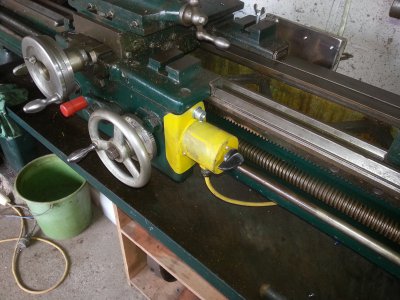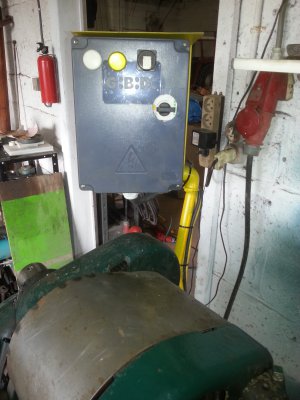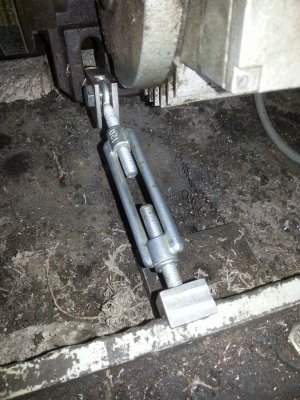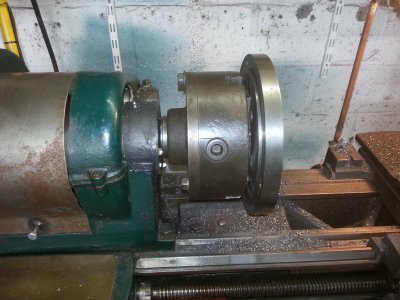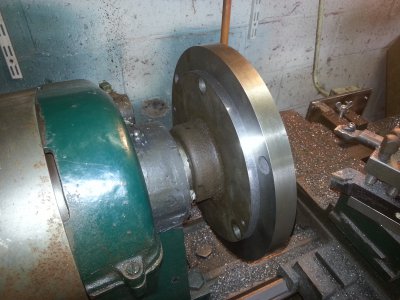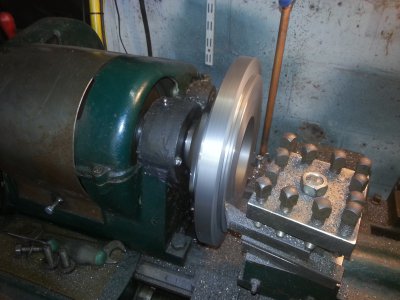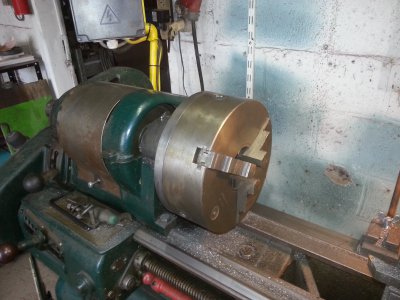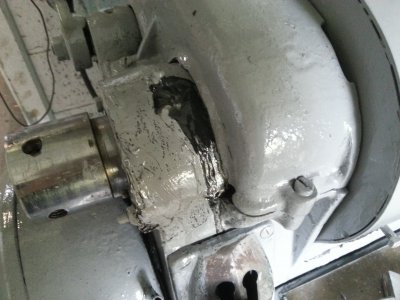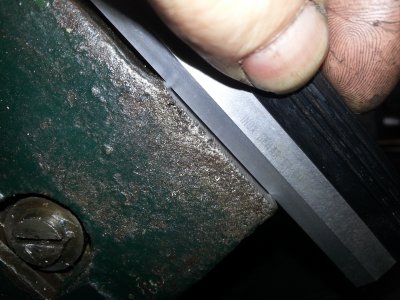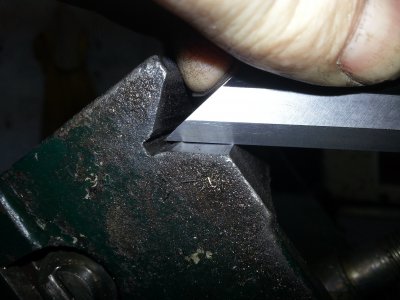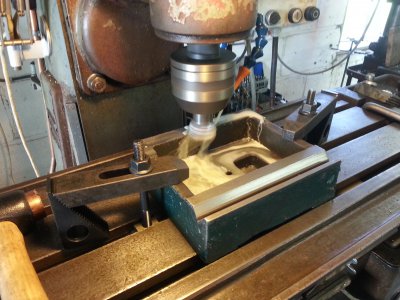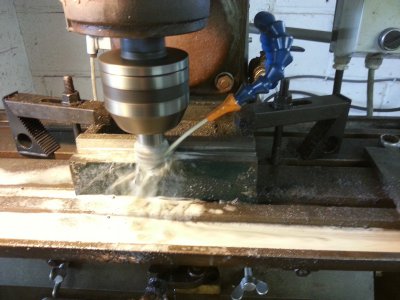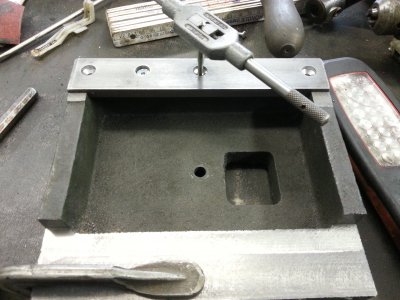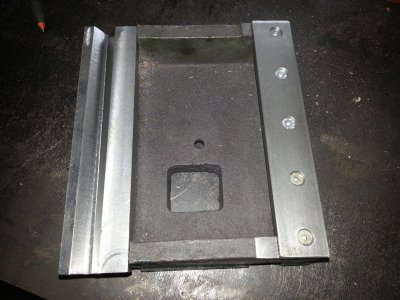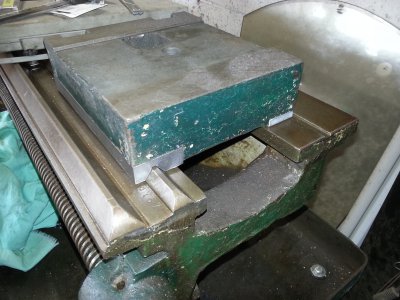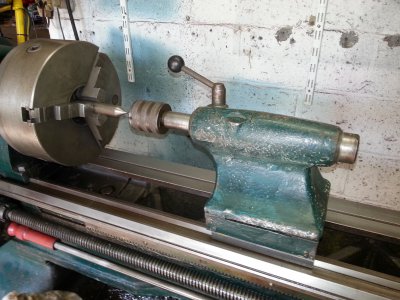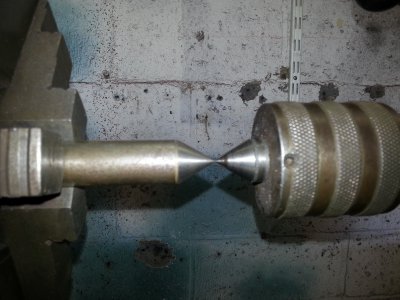- Joined
- Jan 29, 2014
- Messages
- 64
Mondial lathe spindle repair.
I do not know if this is the right place to post this, so correct me if I'm wrong.
My Lathe
Mondial
6½” x 40”
Serial no: 9767
According to the website of lathes.co.uk it could be an MK 2 or an MK 1.
it had bronze bearings and a three speed pulley.
The Bearings on my lathe where completely run out, even the axle was damage. So it was in need of some drastic repair.
I have converted the bearings to conical bearings from SKF in order to do this I made a large boring bar with to places to place a cutter (HSS) which a put into big bearings mounted on plates so I could center the shaft in the middle of the existing bearings and parallel to the bed of the lathe.
The whole assembly was connected to an electric motor with gearbox that was connected to an other gearbox which was laying around in my shop. The speed of the boring bar came this way to 100 rpm. This whole assembly was mounted on the apron so I was able to give manual feed to the bit.
I then bored out the bearing caps to approximately the outside diameter that the new bearings where. The oil ways where filled with epoxy metal from Loctite . The the bearing caps where cut to the diameter needed for the bearings. The bearings where then installed.
The spindle needed some repair to, the bearing faces where cut down on both ends. On the far end from the chuck it was repaired with epoxy metal from Loctite, the end closest to the chuck was repaired with a bushing which was pressed on and the turned down to the diameter of the bearing.
Bushings where made to be able to take of the side play.
The lathe now runs in center like it supposed to be.
I have some pictures of the bearing caps included I forgot to take some pictures of the repaired spindle.
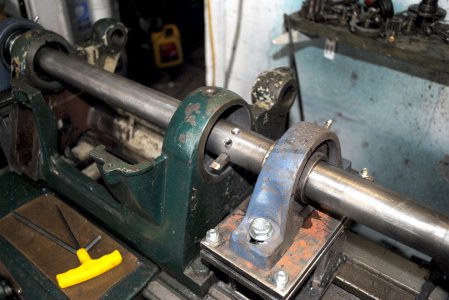
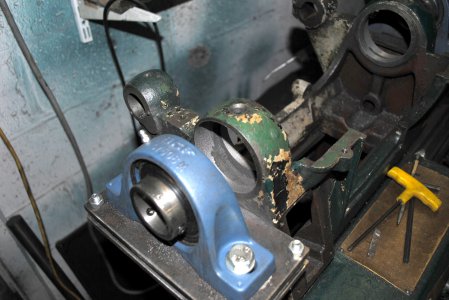
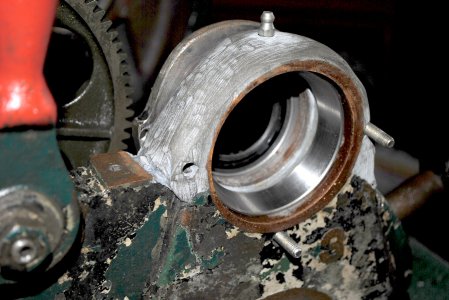
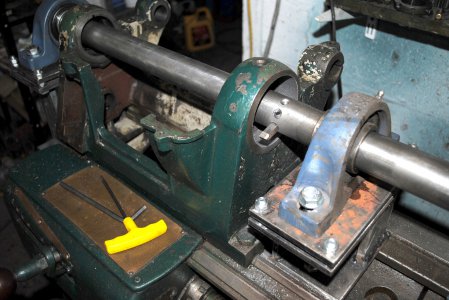




I do not know if this is the right place to post this, so correct me if I'm wrong.
My Lathe
Mondial
6½” x 40”
Serial no: 9767
According to the website of lathes.co.uk it could be an MK 2 or an MK 1.
it had bronze bearings and a three speed pulley.
The Bearings on my lathe where completely run out, even the axle was damage. So it was in need of some drastic repair.
I have converted the bearings to conical bearings from SKF in order to do this I made a large boring bar with to places to place a cutter (HSS) which a put into big bearings mounted on plates so I could center the shaft in the middle of the existing bearings and parallel to the bed of the lathe.
The whole assembly was connected to an electric motor with gearbox that was connected to an other gearbox which was laying around in my shop. The speed of the boring bar came this way to 100 rpm. This whole assembly was mounted on the apron so I was able to give manual feed to the bit.
I then bored out the bearing caps to approximately the outside diameter that the new bearings where. The oil ways where filled with epoxy metal from Loctite . The the bearing caps where cut to the diameter needed for the bearings. The bearings where then installed.
The spindle needed some repair to, the bearing faces where cut down on both ends. On the far end from the chuck it was repaired with epoxy metal from Loctite, the end closest to the chuck was repaired with a bushing which was pressed on and the turned down to the diameter of the bearing.
Bushings where made to be able to take of the side play.
The lathe now runs in center like it supposed to be.
I have some pictures of the bearing caps included I forgot to take some pictures of the repaired spindle.








Last edited:


